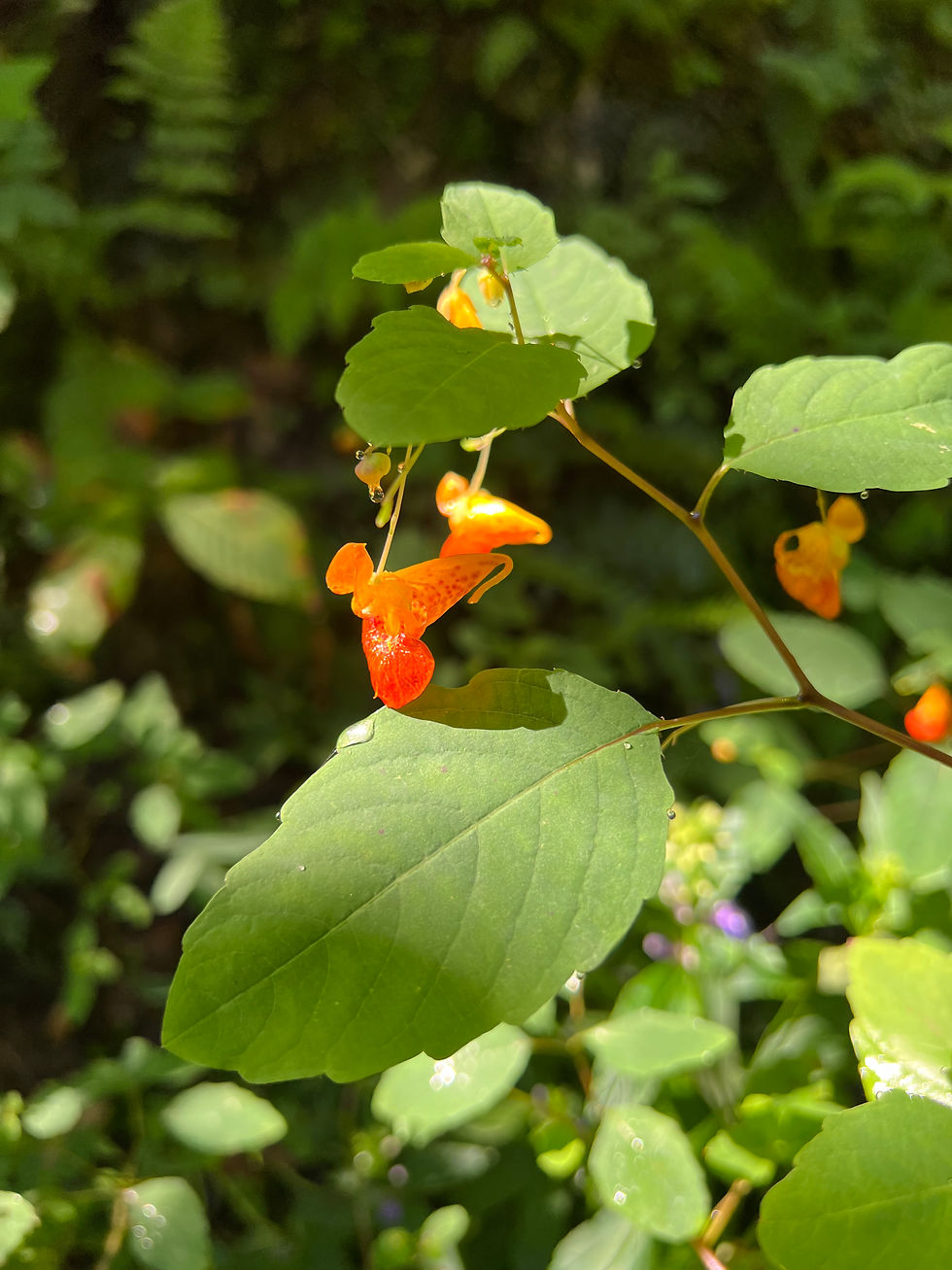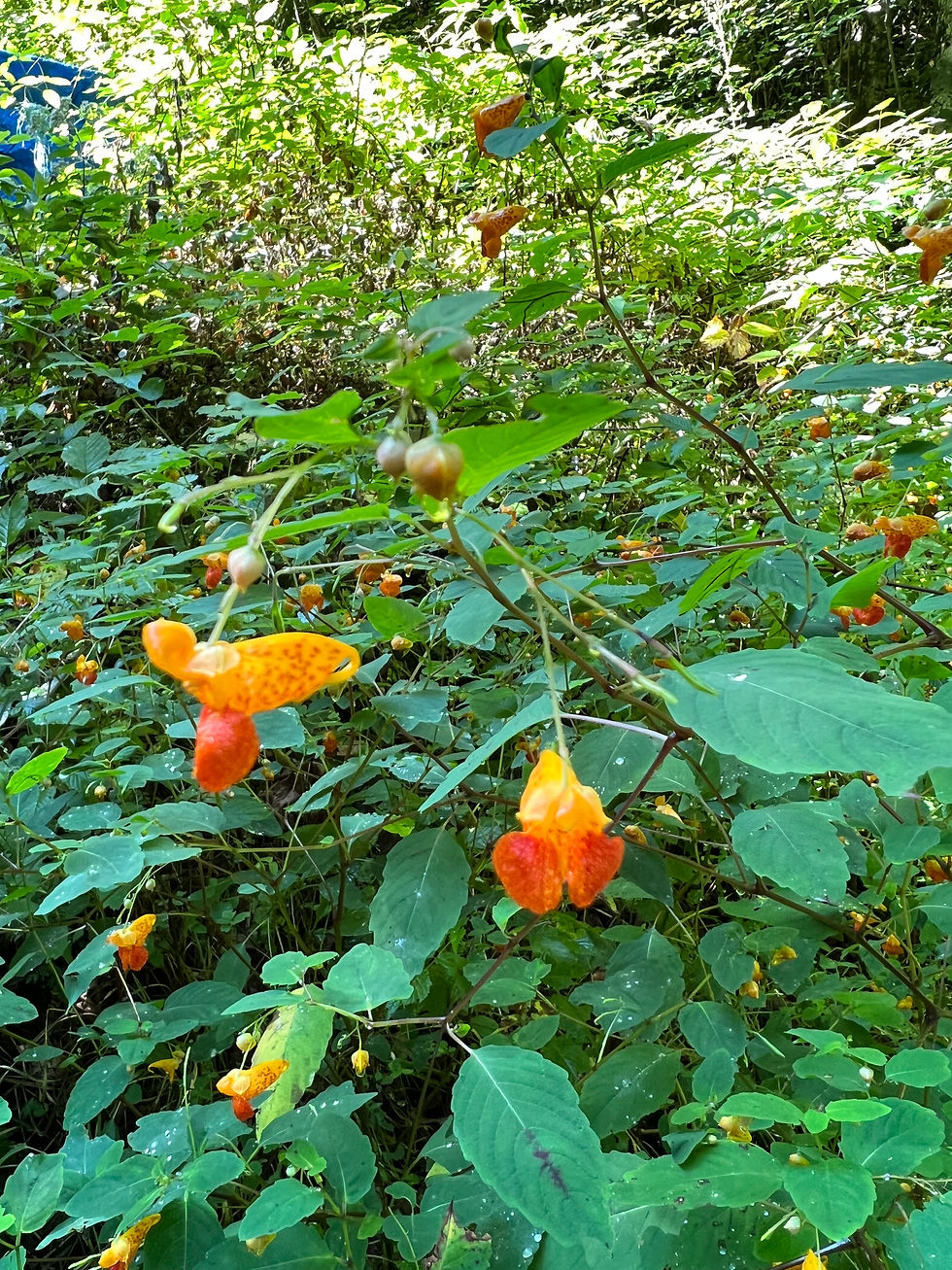Touch Me Not . . . I'm a Jewelweed
- Kimberly Hainge
- Sep 27, 2023
- 2 min read
Jewelweed or Touch Me Not is a plant many of us are familiar with. We actually have two species of jewelweed in our area, one with spotted, orange flowers (Impatiens capensis), and one with pale yellow (Impatiens pallida). Both plants are tall and leggy and can grow up to five feet tall. They thrive in moist shady places and along streams. The plant is called jewelweed because when the soft, delicate leaf is placed underwater it looks like shiny tinfoil. After it rains or in the early morning, drops of water on the leaves reflect the light and look like glittering diamonds.
At the very start of one of my guided hikes, I always show two plants to everyone. One is poison ivy and the other is jewelweed. Both plants grow in the same areas and if you accidentally touch poison ivy you can immediately treat the affected area with jewelweed juice. Although it is not a guarantee, most likely you will not develop the poison ivy rash.

Jewelweed has been used medicinally for centuries to treat skin ailments of all kinds. The juice has traditionally been used to sooth any insect stings, warts, bruises, fungal infections, nettle stings, burns and cuts. According to Steve Brill in his book Edible and Medicinal Plants, “jewelweed contains 2 methoxy-1, 4 naphthoquinone, which is an active ingredient in Preparation H.” At country fairs and fancy beauty salons you can find creams, salves and ointments made from jewelweed. You can store the fresh plant in a Tupperware in the fridge for up to a week. Witch Hazel is also excellent for treating
skin irritations and insect bites and if you pour some in a bottle filled with jewelweed leaves and stems and let it sit for a couple of weeks the strained liquid will last for a very long time in your herbal first aid kit.

There are scientific reasons why the leaves and roots of this plant have medicinal value. It contains a chemical called lawsone, which has both anti-inflammatory and antihistamine properties. It also contains Balsaminones, which have strong anti-itching (antipruritic) properties. Urushiol, the inflammatory chemical found in poison ivy, is affected by all these active ingredients and the juice of the plant relieves the itch of the poison ivy rash in most people. A recently discovered bonus is that University studies indicate that the plant has cancer-preventing compounds too!
The jewelweed is called Touch-me-not by most of the people that grew up in the mountains of western North Carolina. In the late summer and early fall the plant produces a seed pod, an oblong capsule, ½ to 1 inch long. The seedpods’ tissues dry at different rates causing stress and tension. When you touch them, they explode and tiny seeds and pieces of pod shoot into the air. If you cover the seed pod with your hand in a fist when the pod is ripe, you can capture the small seeds. Word has it that they taste like walnuts, and the seeds have been found to contain several potent antimicrobial proteins. For some late summer fun with the kids, jewelweed makes great entertainment. You can show them the leaves underwater, teach them about the snapping seed pods, and, most importantly, instruct them about the medicinal uses of this remarkable, easy-to-spot plant at the same time.





Comments